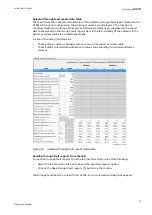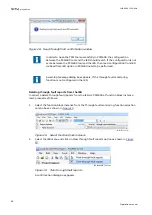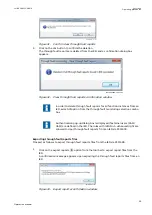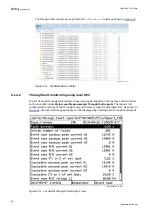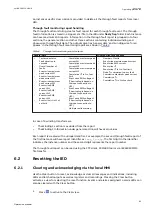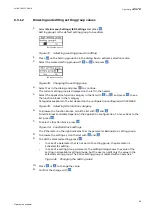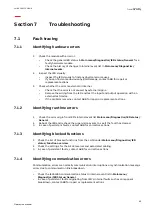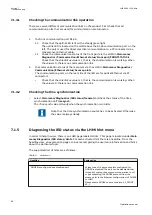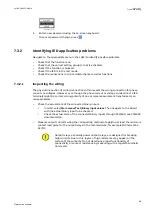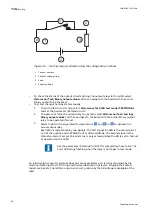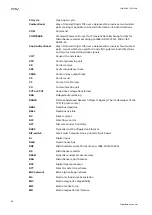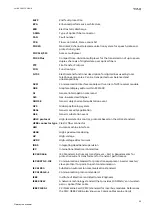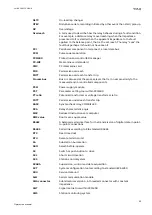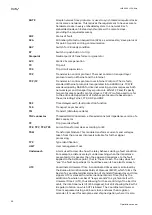
IEC16000001-1-en.vsdx
IEC16000001 V1 EN-US
3.
Enter a new password using the on-screen keyboard.
To cancel password change, press
.
7.3.2
Identifying IED application problems
GUID-D8E1AECF-1FD8-4996-A447-948B52EAD0C2 v8
Navigate to the appropriate menu in the LHMI to identify possible problems.
•
Check that the function is on.
•
Check that the correct setting group (1 to 6) is activated.
•
Check if the function is blocked.
•
Check if the IED is in the test mode.
•
Check the connections to trip and disturbance recorder functions.
7.3.2.1
Inspecting the wiring
GUID-665B75A6-A074-4A03-ADF1-3D0FAD198E61 v8
The physical inspection of wiring connections often reveals the wrong connection for phase
currents or voltages. However, even though the phase current or voltage connections to IED
terminals might be correct, wrong polarity of one or more measurement transformers can
cause problems.
•
Check the actual state of the connected binary inputs.
•
In LHMI, select Main menu/Test/Binary input values. Then navigate to the board
with the actual binary input to be checked.
•
Check the actual state of the connected binary inputs through PCM600, see PCM600
documentation.
•
Measure output contacts using the voltage drop method of applying at least the minimum
contact load given for the output relays in the technical data, for example 100 mA at 24 V
AC/DC.
Output relays, especially power output relays, are designed for breaking
high currents. Due to this, layers of high resistance may appear on the
surface of the contacts. Do not determine proper functionality of
connectivity or contact resistance by measuring with a regular hand-held
ohm meter.
1MRK 500 125-UEN A
Section 7
Troubleshooting
49
Operation manual



